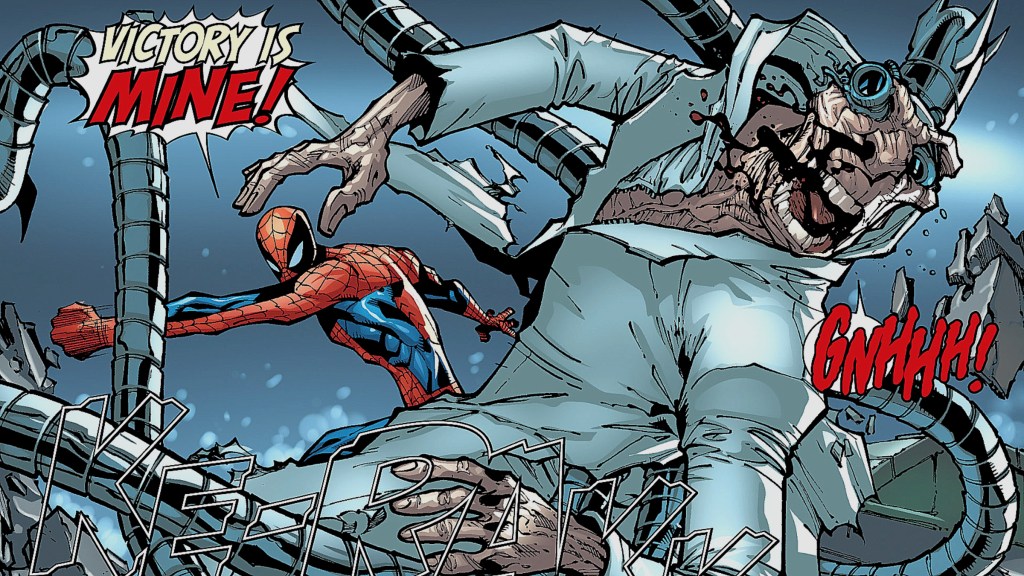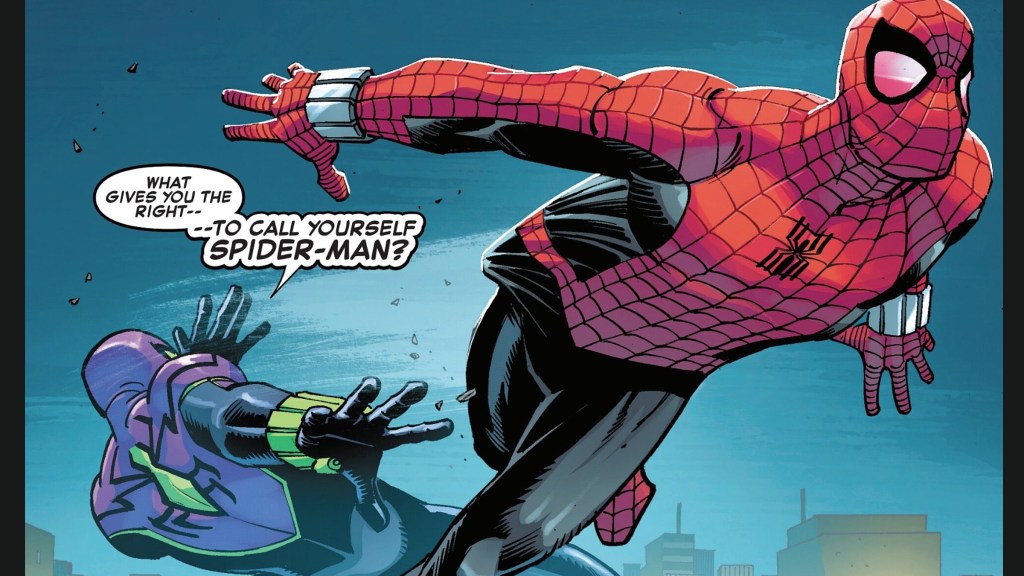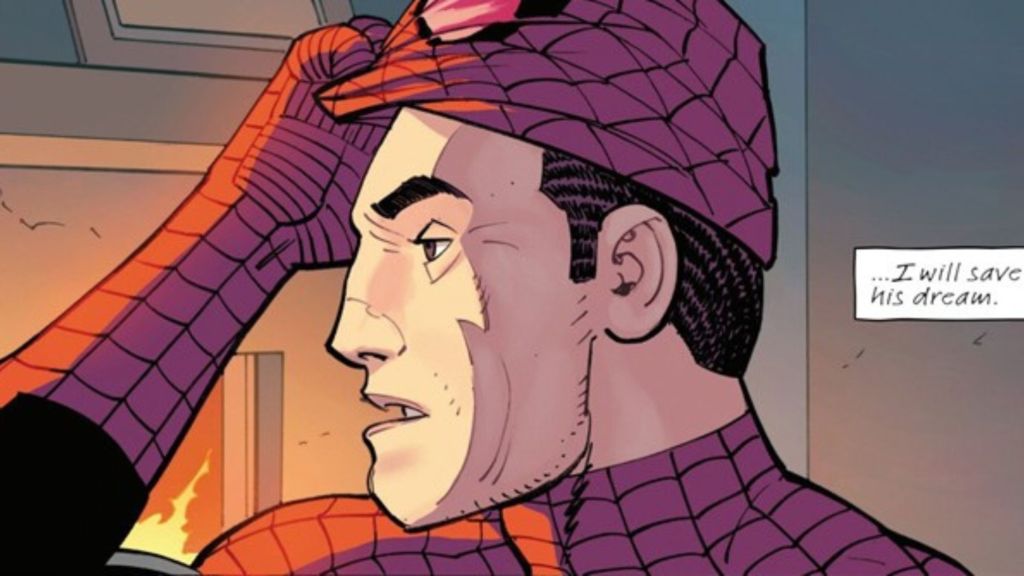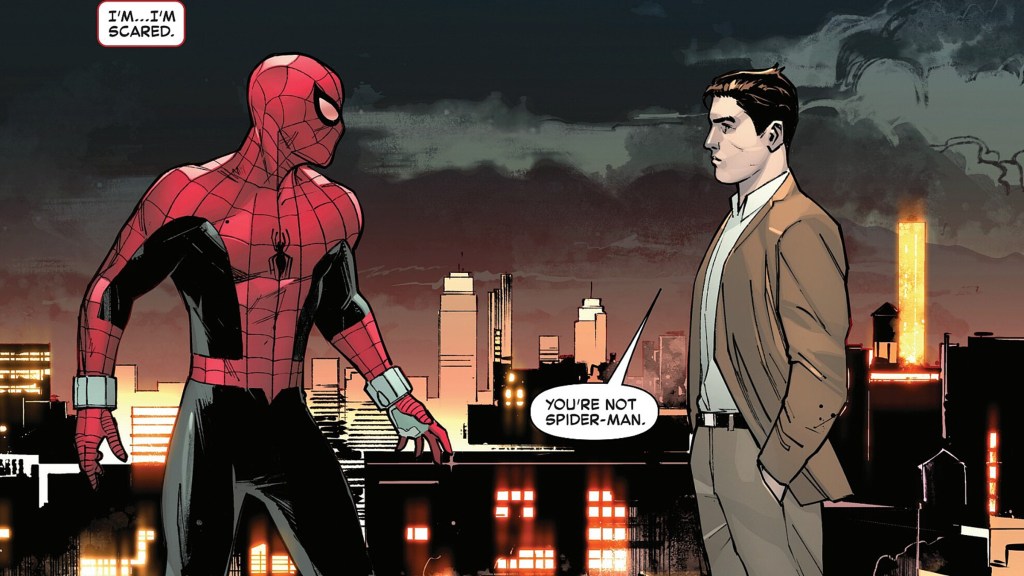The Marvel Comics fan-verse was genuinely shocked to learn in the most recent issue of The Amazing Spider-Man that while Peter Parker has taken up residence on a nameless planet to “find his inner spider,” back on Earth, the person stepping in as the friendly neighborhood wallcrawler is none other than Norman Osborn. But before fans tie themselves into too many knots over this twist, it’s worth remembering that this isn’t the first time one of Spidey’s greatest foes has replaced him.
Videos by ComicBook.com
At the end of the Dan Slott, Humberto Ramos, and Richard Elson’s “Dying Wish” story arc, which ran in The Amazing Spider-Man (1963) #698-700, Peter Parker was “killed” and replaced by someone equally anathema to the Spider-Man legacy: Otto Octavius, a.k.a. Doctor Octopus. Fans would be right to feel that Osborn’s turn as Spider-Man carries a different vibe. His “Resolute Spider-Man” persona stems from his supposedly cleansed conscience, and for now, he appears to genuinely want to do good, though in his own way. By contrast, there was no such change of heart when Otto Octavius became the Superior Spider-Man. He continued to embody the same ruthless persona that defined Doctor Octopus. Naturally, the comparisons between these two alternate Spider-Men will no doubt spark plenty of debate among fans, but the larger question remains: why is Marvel revisiting the alt-Spider-Man storyline at all? Why risk provoking the fan-verse’s ire?
Doctor Octopus had the Perfect Plan

The “Dying Wish” story arc centered on Doctor Octopus’ final master plan. After learning he had less than two years to live, Ock devised a two-pronged scheme. First, he would attempt to take over the world — his ultimate “pièce de résistance.” But anticipating that such a plan might fail, he prepared a backup: to swap bodies with Spider-Man. This way, he could continue living inside Spider-Man’s body while condemning Peter Parker to die in Ock’s failing shell. Naturally, Peter refused to accept his fate. Though trapped in Ock’s deteriorating body, he managed to reverse-engineer the method Ock had used to seize control of his own.
It was a bold attempt, but ultimately unsuccessful. In the end, the real Peter Parker died, while Doctor Octopus lived on — wearing Spider-Man’s face and name. The conclusion of the story — to say the least — shocked fans. The initial reaction was so intense that, as AIPT reported at the time, some fans even sent death threats to writer Dan Slott. Indeed, much like the current change to an Osborn Spider-Man, many fans did not take kindly to the death of Peter Parker, and even fewer accepted that his replacement should be Doctor Octopus — especially given the manner in which Ock executed the switch.
Why Superior Spider-Man Was Revolutionary

As the Superior Spider-Man era developed, the fandom eventually came around to the concept of a “Doc Ock” Spider-Man. While many still disliked the ruthless manner in which Otto Octavius stole Peter Parker’s life, the story won fans over despite its major inconsistencies. Ock’s off-putting and nasty persona often surfaced at the worst possible times, disrupting every aspect of Peter Parker’s world. The true genius of the storyline, however, was that Peter wasn’t truly out of the picture, ensuring the arc’s success was more than just luck.
In the climactic battle in Issue #700, the real Peter Parker was able to transfer his memories back into Doctor Octopus’s mind. These memories became the core of Ock’s conscience, constantly pushing him toward doing good and criticizing him when he failed. This created a tremendous internal struggle for Doc Ock, who was in a constant mental battle with Parker’s memories to either give in to his base desires or control them for the public good. This internal conflict is the key to understanding his time as the Superior Spider-Man. As fans discovered, it was an interesting story that explored what it meant to be a hero, the complexity of morality, and whether a lifelong criminal could ever truly be redeemed.
Enter Norman Osborn: From Goblin to Webslinger

A decade later, Marvel has decided to give another foe the chance to don the Spider-Man mantle. This time, however, it’s the one foe who has an even more intensely adversarial relationship with Spidey than Doc Ock. Norman Osborn, both as himself and even more so as the Green Goblin, has inflicted more pain and hurt on Peter Parker than anyone else. Conversely, Spidey has been a thorn in Osborn’s side for decades. The enmity between the two is deeply personal. Despite the backlash surrounding the “Dying Day” storyline — where Doc Ock took over as Spider-Man — Marvel has once again allowed someone else to wear the webs: Norman Osborn.
This time, however, they’ve put a few guardrails in place to preempt criticism. First, Spider-Man’s absence appears to be temporary. Unlike “Dying Day,” the assumption is that Peter Parker will return in the near future, better than ever. Second, and more significantly, Osborn’s arc avoids the internal conflict that plagued Doc Ock. Whereas Ock was torn between Parker’s memories urging redemption and his own instinct for villainy, Osborn has already been “cleansed” of his evil. He’s purged the madness that fueled his past atrocities and now seeks only to atone for his mistakes.
How Norman’s Resolute Spider-Man Differs from Otto’s Superior Spider-Man

In this case, Osborn’s Resolute Spider-Man is not a nemesis scheming to pull off the ultimate con, but rather a rehabilitated villain striving to help the world in the only way he knows how — by extending and redefining the legacy of his greatest enemy. Still, both the story and the decision to place Osborn in this role are controversial.
If Marvel learned anything from the Superior Spider-Man era, it is that fans are highly protective of how Spider-Man is portrayed. While many eventually grew to appreciate that storyline, they also felt it never quite rang true — a strange detour in Marvel Comics lore that was quietly shelved, and one most believe should never be repeated.
Why Marvel Keeps Letting Villains Wear the Mask

So, despite all past and potential troubles, why is Marvel taking this path with Norman Osborn? The genius of this choice is that it allows creators to explore the principles, values, and ideals of Peter Parker from the perspective of his greatest nemesis. More specifically, it asks whether Spider-Man’s ideals can “lock in” and deepen the redemption of his worst enemy.
In the case of Doc Ock as the Superior Spider-Man, the burden of upholding Spider-Man’s morality was so heavy that he was willing to die rather than continue. Now with Osborn, while he has already started his own journey toward redemption, how much more difficult will that path be with the added sacrifice, responsibility, and morality of upholding Spider-Man’s legacy?
In addition, much like in “Dying Wish,” Osborn’s turn as Spider-Man gives creators the chance to highlight just how remarkable Peter Parker is, both as a person and as a hero. Even Osborn — who knows Peter better than most — will likely come away with a deeper understanding of who Peter is and what he represents. It’s a lesson he won’t easily forget, one that may push him to either admire or despise Parker even more intensely. If this is the driving force behind Marvel’s return to the “villain-as-Spider-Man” concept, then — despite the backlash — they may be onto something significant. After all, the conclusion of “Dying Wish,” for all the vitriol it inspired, went on to become not only one of Marvel’s best-selling comics of 2012 but also one of the top-selling comics of the entire year.
What do you think? Leave a comment below and join the conversation now in the ComicBook Forum!









